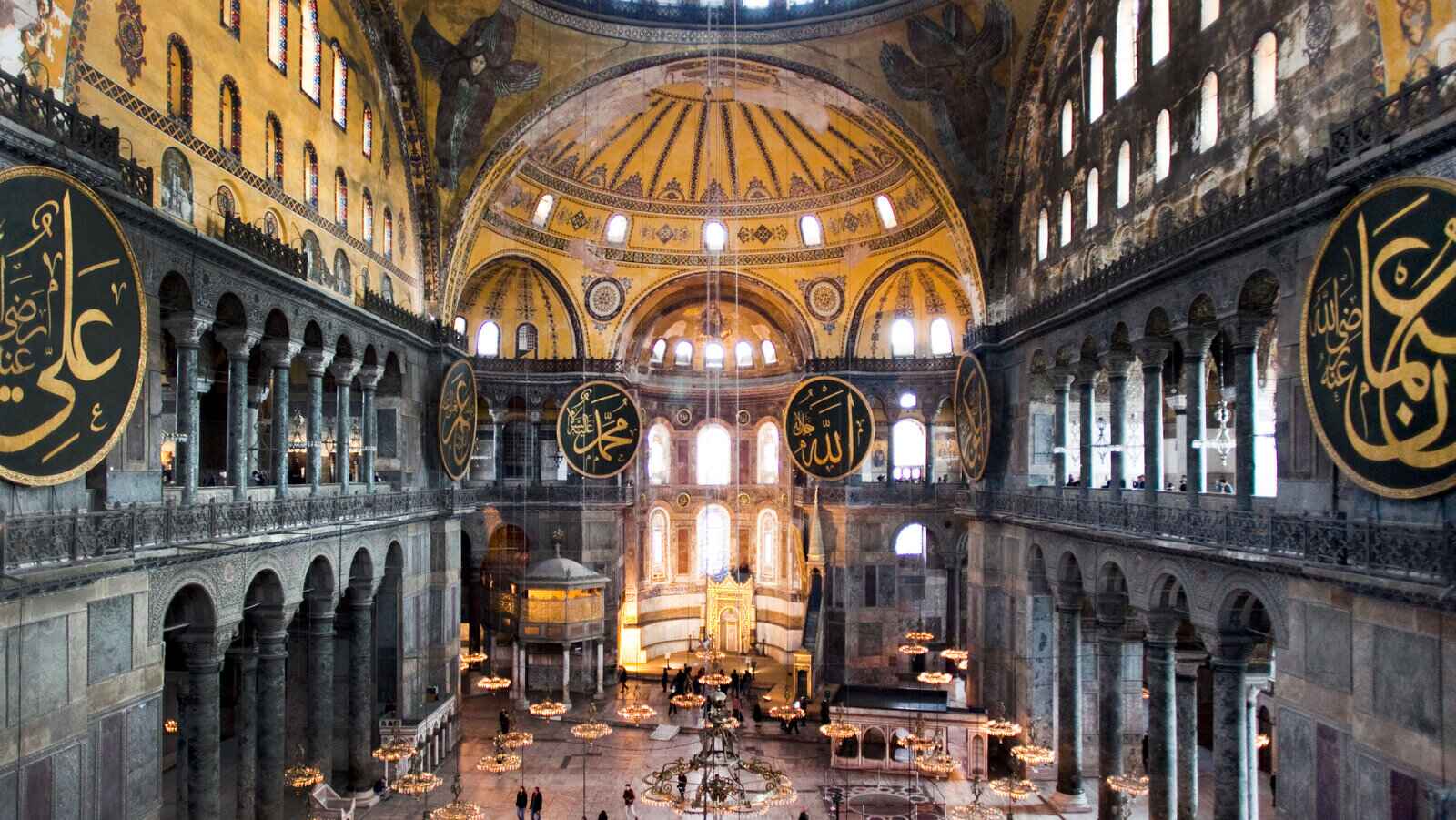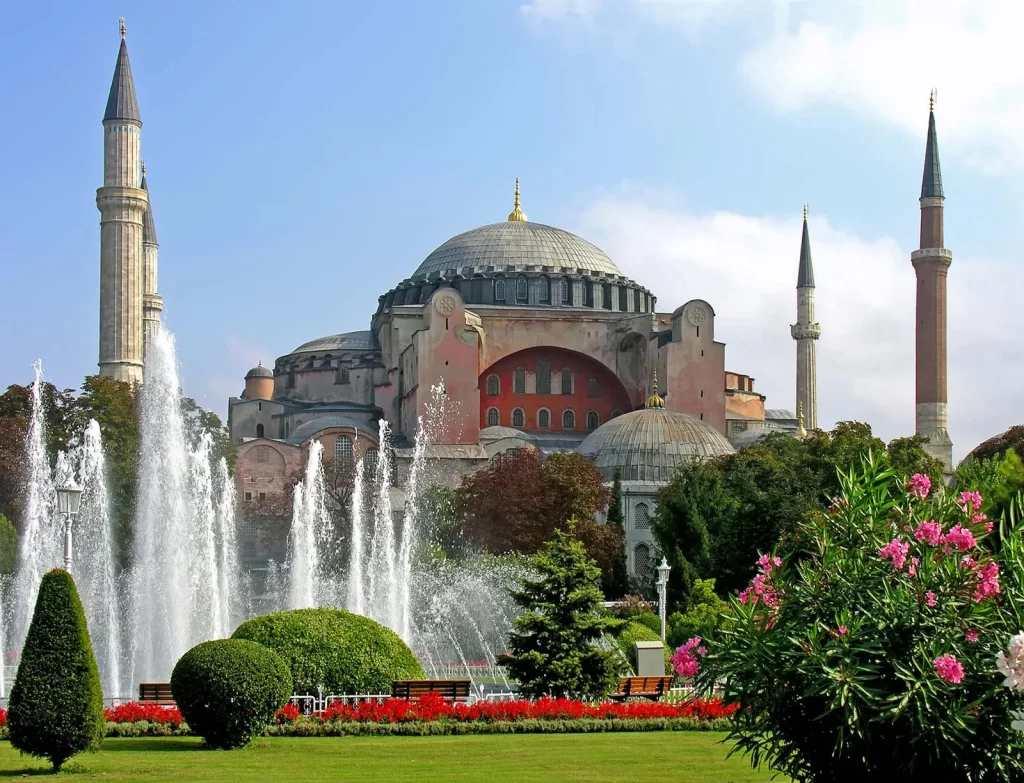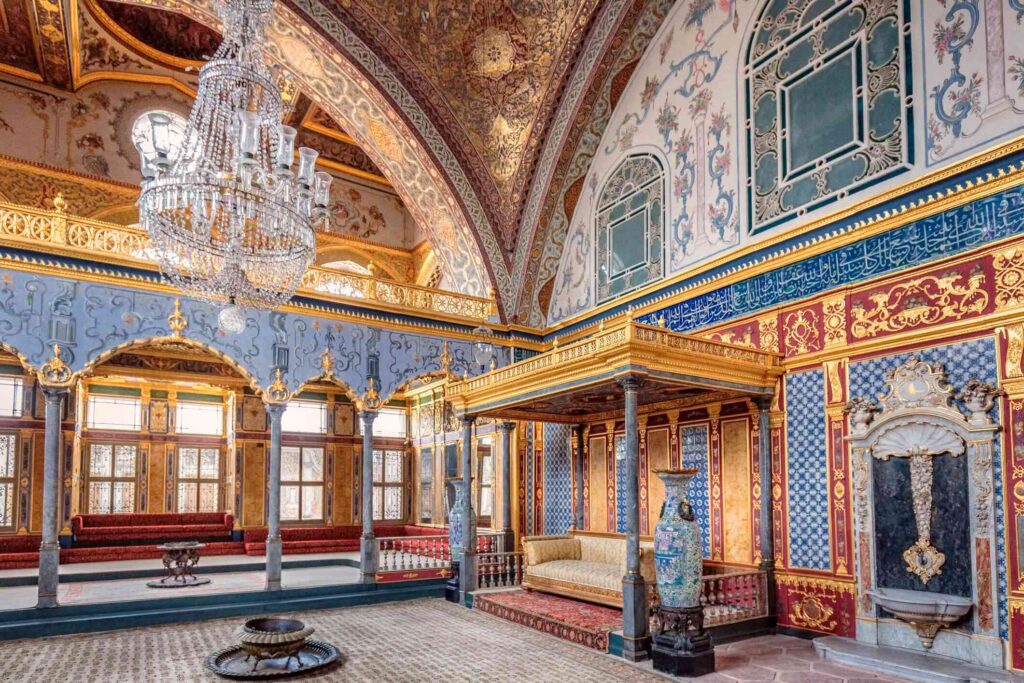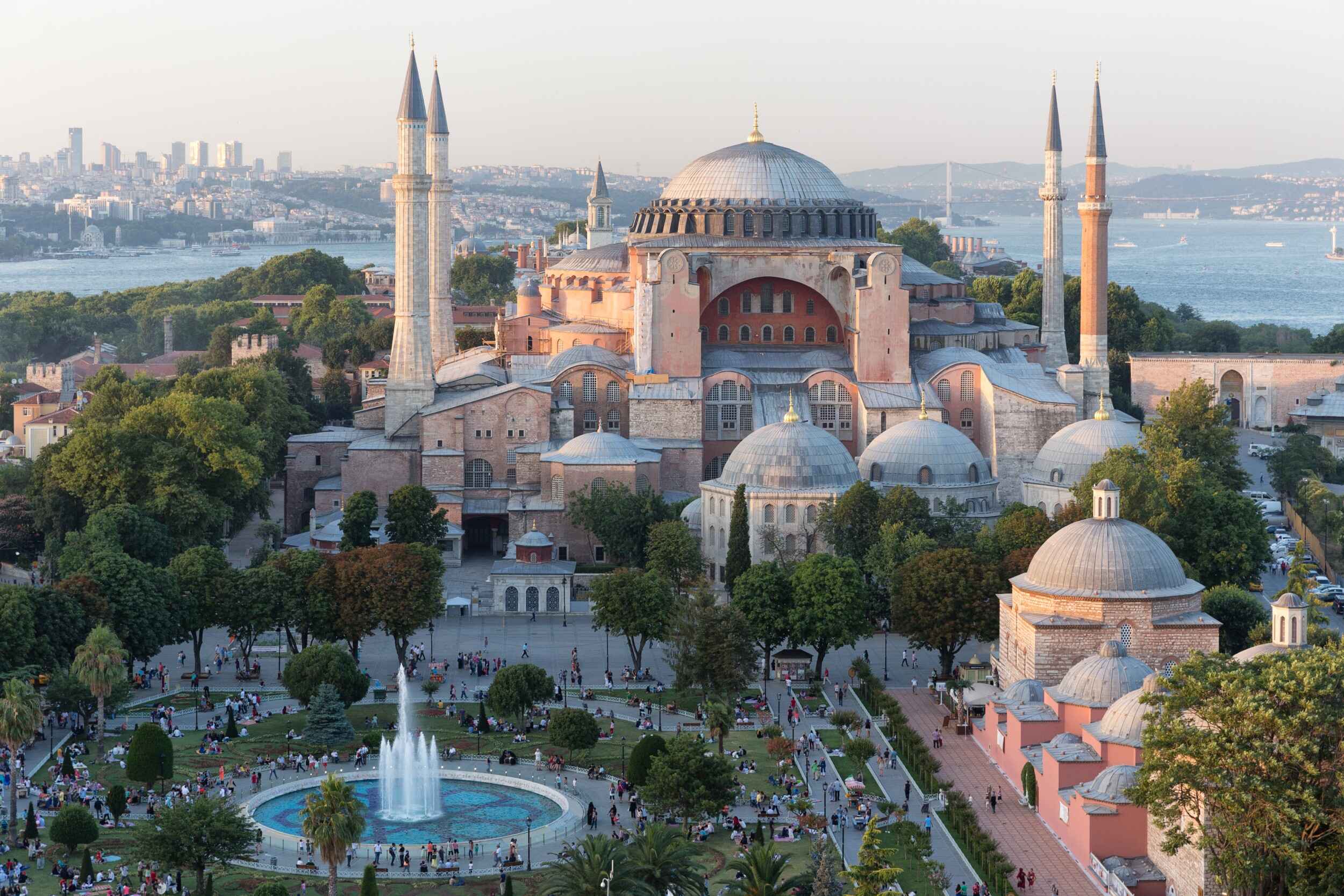Hagia Sophia, Istanbul’s crown jewel: In the heart of Istanbul’s Sultanahmet district, surrounded by minarets, domes, and echoes of empires, stands Hagia Sophia — an architectural wonder that transcends faiths and centuries. Once a cathedral, later a mosque, then a museum, and now a mosque again, Hagia Sophia (Ayasofya) reflects the living history of Istanbul.
In fact, this magnificent monument is more than just a building — it’s a symbol of the city’s layered identity and enduring spirit. Moreover, whether you’re a history lover, a spiritual traveler, or an admirer of architecture, Hagia Sophia stands as the crown jewel of Istanbul’s cultural heritage. As a result, every visitor leaves with a deep sense of awe and connection.

A Timeline of Transformation: Hagia Sophia, Istanbul’s crown jewel
1️⃣ The Byzantine Basilica (537 AD)
Commissioned by Emperor Justinian I, Hagia Sophia was built as a Greek Orthodox cathedral. With its vast central dome and golden mosaics, it soon became the spiritual heart of the Byzantine Empire for nearly 1,000 years. As a result, it stood as a masterpiece of both architecture and faith throughout the medieval world.
2️⃣ The Ottoman Mosque (1453–1931)
When the Ottomans conquered Constantinople in 1453, Sultan Mehmed II converted Hagia Sophia into a mosque. After that, minarets were added, Christian icons were covered, and Islamic calligraphy filled the walls. Moreover, this transformation gave the building a new cultural and religious identity. For nearly five centuries, it remained a central place of worship in the Ottoman Empire.
3️⃣ The Secular Museum (1935–2020)
In 1935, under the reforms of Mustafa Kemal Atatürk, Hagia Sophia became a museum. This change, in fact, turned the monument into a symbol of unity, welcoming visitors of all faiths and backgrounds. In this way, it reflected Turkey’s new secular identity and its dedication to preservation and cultural harmony.
4️⃣ Reconversion to Mosque (2020–Present)
In 2020, Hagia Sophia was reconverted into a mosque, yet it remains open to all visitors. Even today, travellers from across the world come to admire its beauty and history. As a result, the monument continues to inspire awe, reverence, and reflection — a living bridge between past and present.

What to See Inside Hagia Sophia: Hagia Sophia, Istanbul’s crown jewel
1. The Majestic Central Dome
Soaring 55 metres above the floor, the massive central dome appears to float effortlessly in the air — a true masterpiece of Byzantine engineering. Light streams through 40 arched windows, creating a serene and almost heavenly atmosphere. As a result, visitors often describe the space as spiritual and awe-inspiring.
2. Ancient Christian Mosaics
Despite centuries of Islamic influence, several original Christian mosaics still shine through time. Among the most famous are:
- Christ Pantocrator in the upper gallery
- The Virgin and Child above the apse
- Emperor Justinian and Constantine, depicted presenting the city and cathedral
Moreover, these mosaics reflect the deep faith and artistry that once shaped the heart of Byzantine worship.
3. Islamic Calligraphy & Ottoman Elements
In addition, large wooden medallions inscribed with the names of Allah, Muhammad, and the four caliphs now hang above the nave. They coexist gracefully with Christian symbols, creating a rare and powerful blend of cultures. Together, these details tell the story of Hagia Sophia’s spiritual transformation through the ages.
4. The Weeping Column
Finally, in the northwest corner, stands the Weeping Column, a marble pillar said to emit holy water with healing powers. Visitors often place their thumb inside a small hole, make a wish, and rotate it clockwise for good luck. Because of this legend, it has become one of Hagia Sophia’s most cherished traditions.

Best Time to Visit: Hagia Sophia, Istanbul’s crown jewel
🌅 Early Morning
Start your visit early to enjoy soft lighting, cooler temperatures, and fewer tourists. In fact, mornings are perfect for peaceful photos and quiet reflection before the crowds arrive. As a result, you’ll capture the site’s true beauty in calm surroundings.
📅 Weekdays
Plan your trip on weekdays rather than weekends. During these days, the atmosphere feels calmer and more relaxed. Therefore, you can explore at your own pace without dealing with large crowds or long lines. It’s the best choice for a smooth, stress-free experience.
🕌 Ramadan or Eid
Visiting during Ramadan or Eid offers a richer cultural experience. However, remember to respect prayer times and follow the modest dress code. Moreover, these holidays are a wonderful chance to observe local traditions and connect with the community in a meaningful way.
💡 Tip
Dress modestly when visiting religious sites. Women should carry a scarf to cover their heads before entering. This simple gesture shows respect and helps you blend naturally into the local culture.
How to Get There: Hagia Sophia, Istanbul’s crown jewel
🚉 Nearest Tram Stop
The Sultanahmet Station on the T1 line is the closest stop to this site. From here, you can easily walk to many of Istanbul’s most famous landmarks. In fact, the short stroll gives you a chance to enjoy the city’s lively streets and historic charm along the way.
🏛️ Nearby Landmarks
Within minutes, you’ll reach the Blue Mosque, Topkapi Palace, and the Basilica Cistern. Together, these landmarks form the heart of Istanbul’s Old City, offering a perfect route for sightseeing. Moreover, their close distance makes it easy to explore several highlights in one trip.
⏰ Opening Hours
The site is open daily, and entry is free. However, tourist access is restricted during prayer times, so plan your visit accordingly. As a result, early mornings or late afternoons are often the most peaceful times to explore. Additionally, the soft light during these hours makes for beautiful photos.
Final Thoughts: A Living Monument to Civilizations: Hagia Sophia, Istanbul’s crown jewel
Hagia Sophia is more than stone and stories — it is a living legacy of two great empires and two great faiths. In fact, this masterpiece reflects humanity’s long search for the divine. Today, it invites visitors to look beyond conflict and politics and to see the beauty of coexistence through art, architecture, and sacred design.
Moreover, whether you’re standing beneath the grand dome, whispering near the Weeping Column, or gazing at golden mosaics beside Islamic script, Hagia Sophia offers a once-in-a-lifetime experience that connects past and present in perfect harmony.
